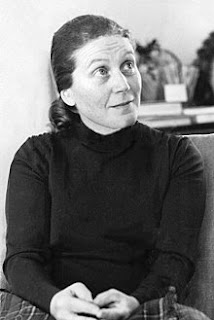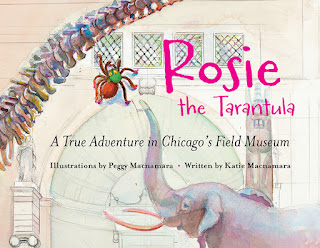Leslie Pietrzyk is the author of the new novel Silver Girl. Her other books include This Angel on My Chest and A Year and a Day. Her work has appeared in a variety of publications, including Salon and The Washington Post Magazine, and she teaches at the Converse low-residency MFA program. She lives in Alexandria, Virginia.
Q:
How did you come up with the idea for Silver Girl, and for your main character?
A:
I had a complicated yet significant female friendship that started during my
college years that still reverberates through my life. So much of this book is absolutely
invented, but it started with that core of inspiration from my own life.
The
characters were developed in my prompt writing group, as I responded to writing
prompts by sending Jess and the unnamed narrator into action, slowly
discovering who they were and what secrets they were hiding.
Q:
Why did you decide to set the novel in the early 1980s, and how did you
recreate all the details from that time period?
A:
That was a time of upheaval, with Reagan’s election perhaps (almost) close to shocking
us as much as this recent election did. But for sure Reagan’s years as
president sent many ripples outward as the world suddenly became re-ordered.
And
the Tylenol murders were of special interest to me as an early act of domestic
terrorism. Certainly this crime rippled outward as well, bringing about the
need for protective packaging—and the understanding that nothing really could
protect us from everything. (Maybe I was the right age to learn that lesson.)
The ‘80s seemed like a provocative time to come of age.
As
for working with all those details, the hardest part was that lots of early ‘80s
fashion and pop culture is now mocked—giant shoulder pads, ripped up
“Flashdance” sweatshirts—so I worked to find authentic details that have stood
the test of time (the Rolling Stones, say).
Q:
Did you write the chapters in the order in which they appear in the novel, or
did you move things around as you wrote?
A:
I wrote nothing in order, which was a liberating way to write, simply following
the questions in my mind: what was the narrator’s life like in Iowa? How did she
and Jess meet? What happened during their summers apart?
Unfortunately,
the wandering of my mind was a terrible way to organize a book, so I spent days
staring at a typed-up Table of Contents, scribbling in arrows and scribbling
them right back out, shuffling stacks paper-clipped pages here and there.
The
key to the final structure came when I landed upon the metaphor of the endless
lists the narrator keeps and her numbering system, which helps support the
book’s non-chronological timeline. I knew a non-linear story might be a
drawback for some readers, but I really wanted the book to reflect that deep
dive of pondering a time and a place and a person who both was and wasn’t
“you.”
Q:
How was the book’s title chosen, and what does it signify for you?
A:
I’m the world’s worst at titles, but I do like this one. The phrase is taken
from a verse in Simon & Garfunkel’s “Bridge Over Troubled Water,” though
the song isn’t mentioned in the book. Such a resonant pairing of words, though….
And I liked the implication that the Silver Girl is second to the Golden Girl,
which worked for my characters, as does the suggestion of commerce with those
precious metals.
Once
I decided this had to be the title, I had to find a way to work it into the
book and I wasn’t keen on seeking permissions to quote the song lyrics, so I
was inspired to create the stories the narrator tells her little sister about
the mythical Silver Girl. Once you’ve got a character telling stories within
your story, the danger is going overboard with metaphor and symbolism. Here’s
hoping I reined myself in.
Q:
What are you working on now?
A:
I’m sort of at a crossroads as I type this…dive into a new novel that’s been tickling
at the edges of my brain? Or get back to a series of short stories I was a
third of the way into? Or…both? Is that possible? I really miss not being
immersed in a Big Project, so something is going to win out pretty soon.
Q:
Anything else we should know?
A:
A good bit of this book was first formed in my neighborhood prompt writing
group where we meet monthly and write for 15 minutes to one word and then 15
minutes to a second word. So, 30 minutes total. That’s all. You really can find
your way into your creative self or through a longer project or remember why
writing is joyful with just this tiny amount of time.
Here’s
a link to an article I wrote about how to start your own prompt writing group.
--Interview with Deborah Kalb. Here's a previous Q&A with Leslie Pietrzyk.





























